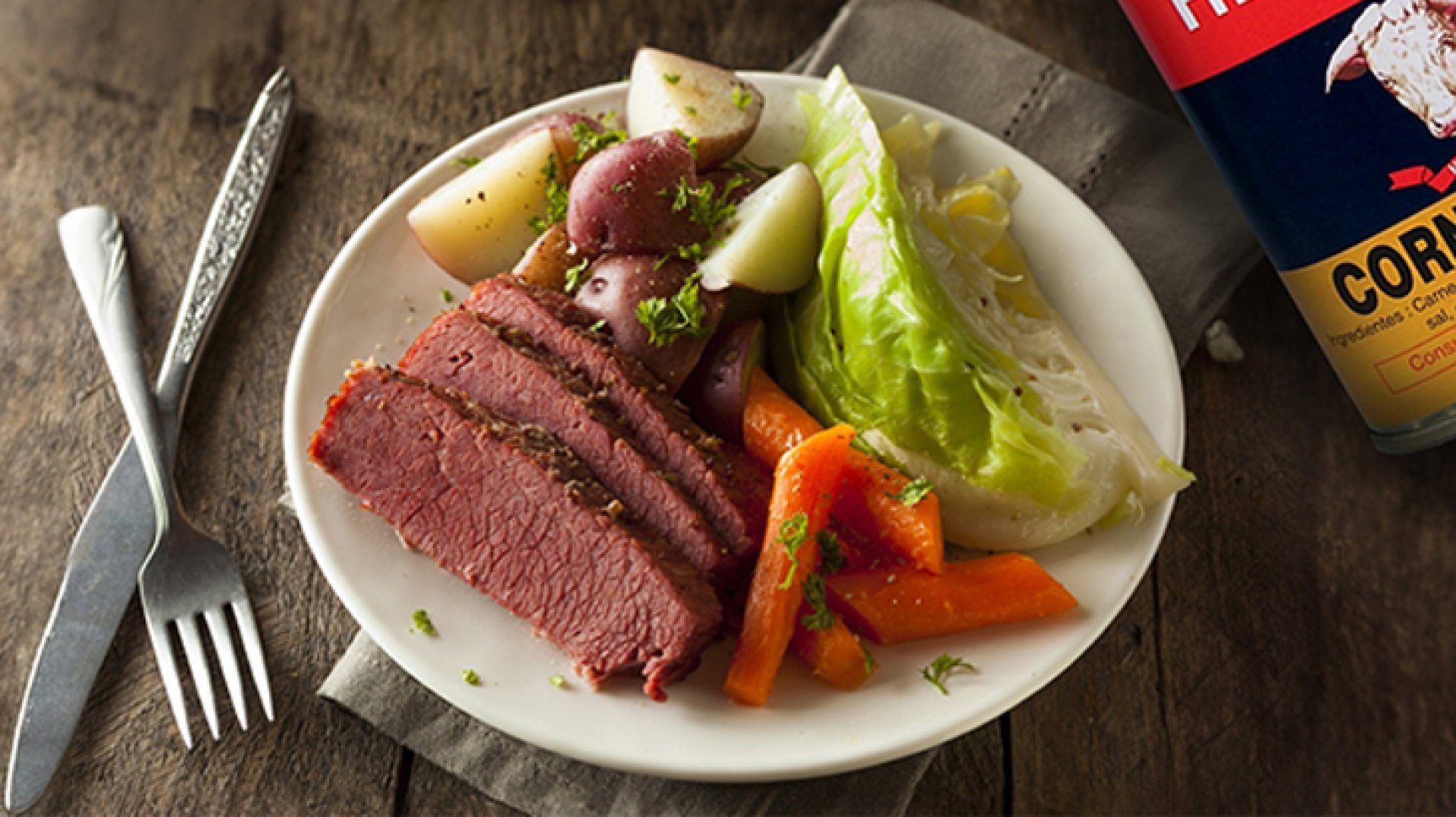Corned Beef

Curing meat with salt has been a preservation method for thousands of years, but the term Corned Beef only emerged in the 17th century in Britain. The word Corn does not refer to maize (corn), but rather to the large grains of rock salt used in the meat curing process. Today, Rimping Supermarket invites you to learn about this popular food.
Origins in Ireland: Preservation out of Necessity (17th Century)
The story of Corned Beef begins in Britain. Legend has it that historically, Irish people raised large numbers of cattle and exported them to England. However, in the 17th century, English farmers increased their cattle raising. Consequently, the government enacted a law called the Cattle Act to restrict and prohibit the import of Irish cattle into the country, fearing it would affect English cattle farmers.
This situation resulted in a surplus of beef in Ireland. As a result, the Irish sought ways to preserve food by using cheap rock salt available in Ireland to cure beef, making Corned Beef. They then exported it to the French West Indies, where Corned Beef eventually became a popular food among sailors and explorers due to its long shelf life and resistance to spoilage.
Furthermore, during wartime, Corned Beef also served as a food source for the French and English navies. Even amidst war with France, England allowed French ships to dock in Ireland to purchase Corned Beef (according to a report published by the School of Culinary Arts and Food Technology of the Dublin Institute of Technology).
Production and Unique Characteristics
Corned Beef is primarily made from beef brisket, cured with rock salt and spices, then aged for two or three weeks. Corned Beef has a similar appearance to Turkish Pastrami, but differs in that Pastrami is made from various types of meat and is often smoked as well.
From Famine to Popularity in the USA (1845 AD - Present)
Between 1845 and 1849 AD, the Great Irish Potato Famine occurred, caused by several consecutive years of potato crop failures (the primary agricultural crop). This led to a major famine for the Irish people. Consequently, many Irish people crossed the Atlantic Ocean to the United States.
Upon their arrival in the United States, they found that beef was cheaper here compared to their homeland, Ireland. Thus, they began to produce and sell Corned Beef. The Industrial Revolution in the United States further boosted Corned Beef's popularity with refrigeration and canning technologies. Irish-Americans commonly enjoy it on St. Patricks Day, served with cabbage and potatoes.
Over time, Corned Beef's popularity transcended borders and spread into the culinary traditions of various countries, including the United Kingdom, where it is commonly used in diverse dishes like Corned Beef Hash and Sandwiches. In South America, such as Argentina and Brazil, Corned Beef is often served with rice and beans or used as a filling for Empanadas.
Currently, Corned Beef has become a widely popular canned food worldwide due to its ease of consumption, quick preparation, and affordability. It is increasingly paired with a variety of dishes, such as taco fillings, sushi rolls, and pizza toppings.


